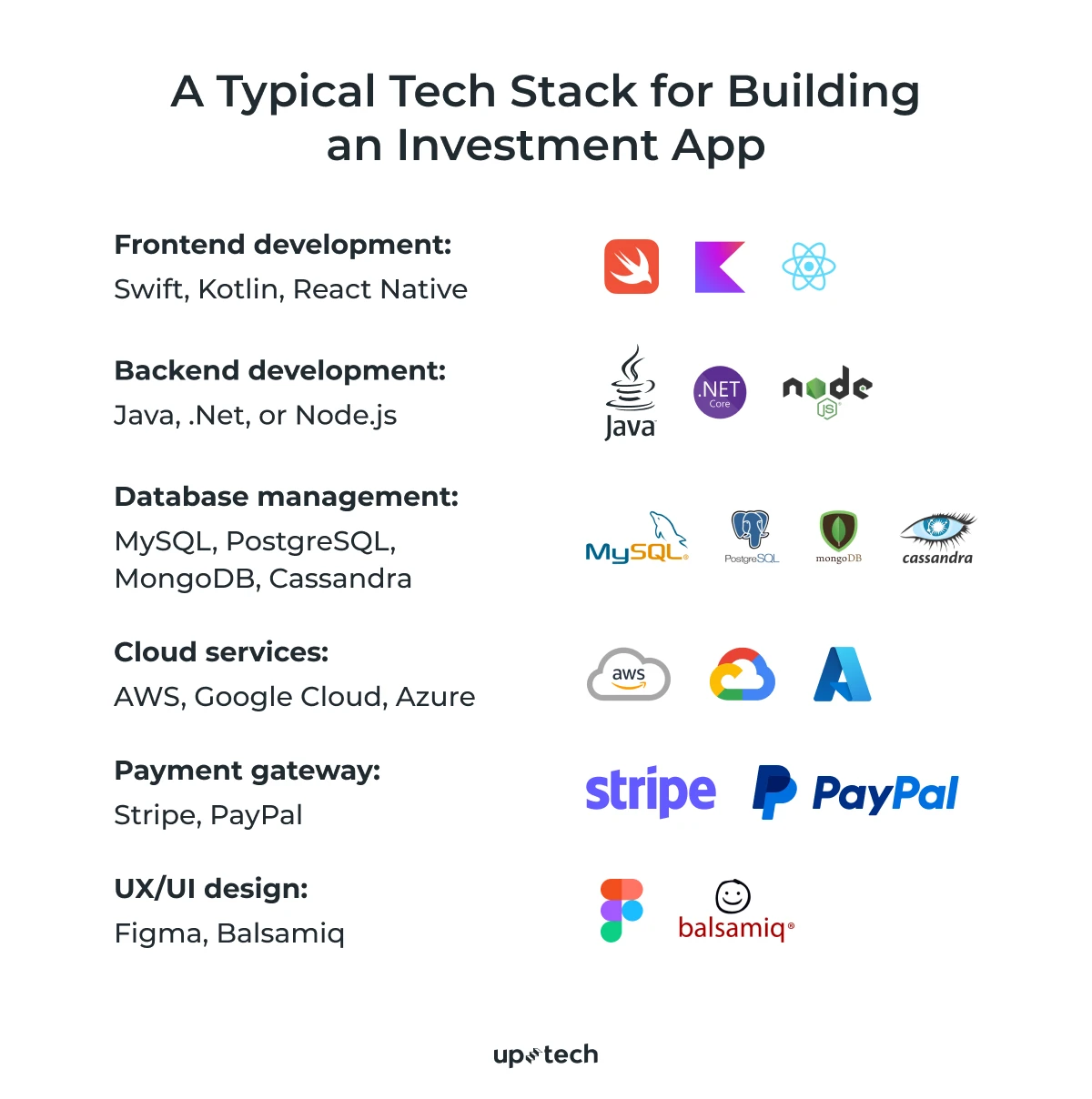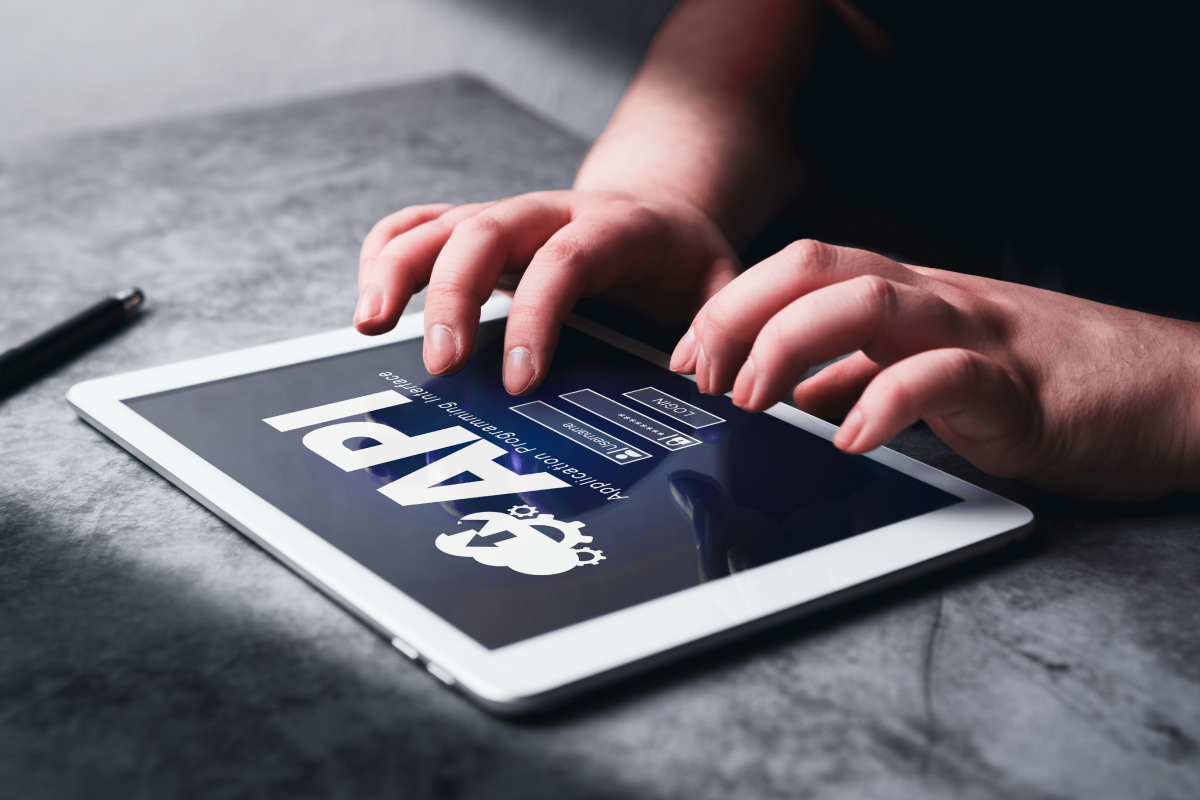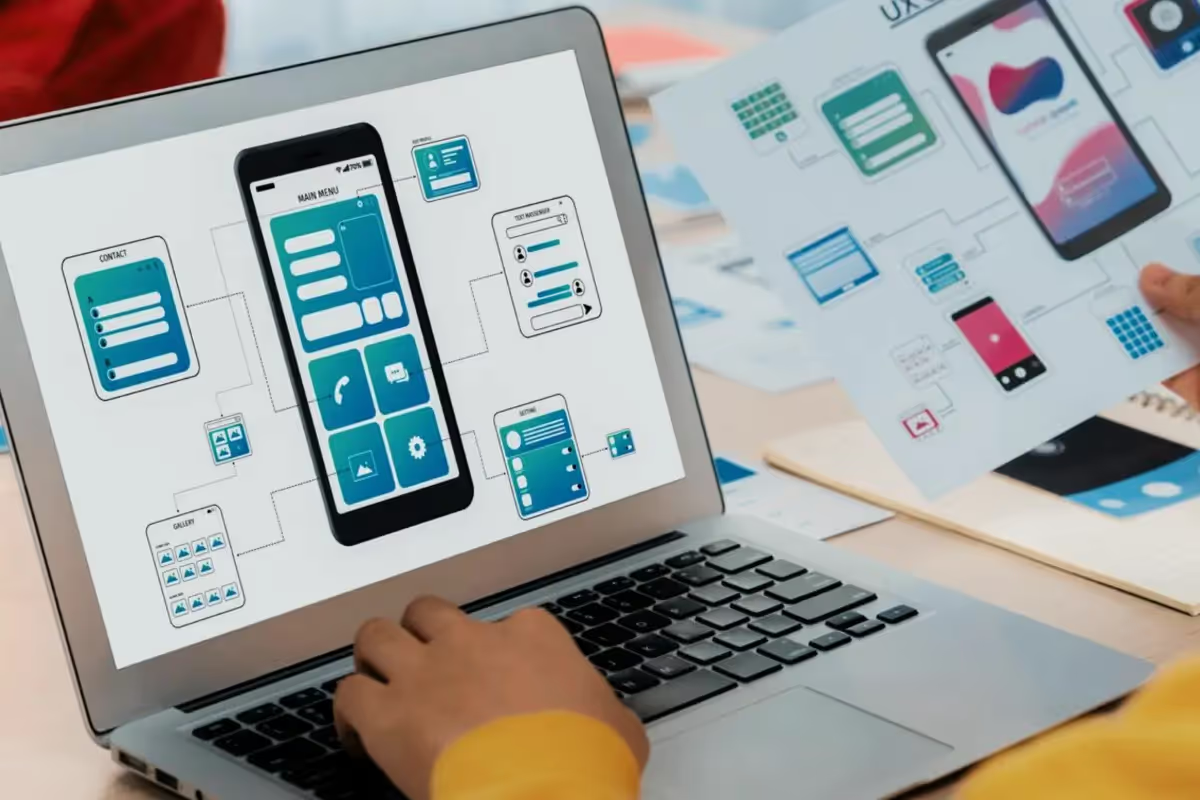I will put it straight: It can be hell of a challenge to create an investment app that will stand the competition on the App Store or Play Market. However, the tough competition works both ways.
On one hand, the demand for investment solutions is incredibly high today, and the market still has a vast potential to grow. Check this: Globally, more than 75% of smartphone users have engaged with at least one app to manage their finances, with a notable uptick in the usage of investment apps. Even younger generations today are becoming active investors.
On the other hand, the competition for investment apps in the market is overwhelming!
But let it not disrupt your enthusiasm. Creating an investment app that stands out is possible. Having worked on investment startups, I know how to create an investment app that will stand out.
In this article, I want to share:
- What features an investment app should have.
- The steps it will take you to build an investment app.
- How much it costs to create an investment app.
- Other things to consider when creating an investment app.
Let’s start!

What Are Investment Apps and How Do They Work?
An investment app is a mobile service that provides users with the tools and resources to buy, sell, and manage investments.
4 types of investing apps to create
Today, investment apps go beyond simple trading platforms. There is a great variety of investment apps to create. Here are some of the most popular ones.

Banking apps
These are classic all-in-one banking apps that have an integrated investing feature. They are usually made for users who are not die-hard traders but can randomly buy a share or two a month.
Example: Revolut is a global neobank and financial technology company that offers investment features in addition to typical banking services. Users can buy or sell stocks and cryptocurrencies through the app, which also delivers personalized, current market insights.
Stand-alone investment apps
Unlike integrated investment solutions, stand-alone investment apps are full-fledged products focused only on investment.
Stand-alone apps come in different variations, namely:
- DIY (do-it-yourself) investment apps, in which users manage their investments on their own.
- Human advisor apps, where, as the name suggests, human financial advisors provide personalized investment advice online.
- Robo-advisor apps with algorithms that automatically manage user investments based on their risk preferences and financial goals, with little or no human interaction.
- Hybrid advising apps – there are features of both robo-advisors and human advisor services.
Example: Acorns, an American fintech company, specializes in micro-investing and robo-advising. Its standout feature allows users to invest small amounts automatically. For example, if you spend $9.50 on a book, Acorns rounds it up to $10 and invests the spare 50 cents.
Exchange investment platforms
These financial platforms process currency and cryptocurrency exchange transactions. Users invest money and exchange it for other currencies. As a bonus, these platforms also provide stock investment.
Examples:
- Robinhood provides a platform for commission-free trading in stocks, ETFs, cryptocurrencies, and options, accessible via a mobile app and a website. It offers an intuitive platform that simplifies buying and selling stocks, making it a good option for those new to investing.
- Vanguard, an asset management company, offers investment accounts where clients can access a variety of securities, including stocks and mutual funds. Another notable platform,
- E-Trade combines user-friendly features with a wide range of investment tools, making it suitable for novice and experienced investors.
Cryptocurrency platforms
As the name suggests, such investment apps are solely focused on cryptocurrency transactions.
Examples:
- Binance is probably the most well-known crypto exchange service, offering a wide range of digital currencies and advanced trading features.
- Coinbase is another popular online platform for buying, selling, transferring, and storing cryptocurrency.
How investment apps work
The app connects to a user’s bank account so that they can deposit funds into an investment account. The app shows different investment options in different assets, like stocks, bonds, futures, mutual funds, or cryptocurrencies, along with their prices and performance history. The user selects their desired investment, and the app handles the transaction.

Serving as a bridge between you and the financial markets, these systems often offer educational resources and real-time market data to help users make informed decisions. Additionally, it allows for monitoring the performance of investments and making changes to a portfolio as needed, all through a smartphone.
Now that you know the different types of investment apps and their working principle, let’s move on to the creation of one.
10 Essential Steps To Create an Investment App
As you can see, investment apps are different. Below, we want to highlight some moments to keep in mind to build a stand-alone investment app.
Here are 10 steps you need to take to build an investment app of this type:
- Conduct market research
- Determine your monetization strategy
- Comply with regulatory requirements
- Choose the platform
- Decide on features for your investment app
- Make a user-friendly design
- Develop an app using a fitting tech stack
- Consider data security
- Test an app
- Launch your product

Step 1: Conduct market research
As for the target audience, everything is more complicated than you can imagine. The main mistake is usually taking a broad look at your targeted audience, considering them as “just people who want to invest.”
Uptech’s Pro Tip: the narrower your audience is, the better investment app you can create.
To bring value to the user, you should know precisely who they are and what makes them happy and sad. Are they Millennials and Zoomers or more seasoned traders? Banking employees or socially responsible civilians?
Take millennials, for example. These young people care about their future and want to start investing now. However, they may lack the knowledge and financial resources to invest.
For this group, you can offer simple analytics and tips or a chatbot advisor that will make it easier for them to make the first step and buy their first Apple share.
Uptech's Tip: Also, if you target beginners (like Charles Schwab), it can be enough to make just a mobile investing app. But when it comes to creating investment apps for more seasoned traders (like Robinhood) who trade for a living, you should put more focus on the web version.
To find the targeted audience that needs the product, we at Uptech usually conduct a Product Discovery phase. There, you can communicate with your end-users and find a solution to help them complete their goals better.
A recent project that illustrates this approach is our work on a green investment app. This app was designed not only to manage investments but also to make a positive impact on the climate. Faced with a general target audience profile, we conducted in-depth user research. Our team engaged in interviews and tests to uncover specific user needs and preferences. As a result, Uptech created a user-friendly app that enables green investors to manage their investments and measure their environmental impact.
Step 2: Determine your monetization strategy
An important step during your journey of building an investment app is to choose the fitting monetization strategy. There are a variety of different options. Below, you will find the most common ones for the financial apps.
- Transaction fees. With this strategy, you can charge a small fee for each transaction, such as buying or selling stocks. The fees are usually a percentage of the transaction amount.
- Subscription models. Another steady source of revenue can be offering premium features through subscription plans. It's when you grant your subscribers access to advanced analytics, personalized financial advice, or other exclusive services.
- In-app advertising and partnerships. Displaying ads or partnering with financial institutions can be a good monetization option. This could include promoting financial products or integrating services that complement the app’s offerings.
Speaking of unique app monetization strategies, at Uptech, we had the opportunity to collaborate with Aspiration, a financial firm that stands out with its distinctive monetization model. Since 2016, Uptech has been working with Aspiration to develop secure, fast, and reliable iOS & Android apps that embody these principles.
Aspiration operates on a “Pay What is Fair” approach, allowing customers to choose their own fees. This innovative strategy is built on trust and a commitment to social responsibility, with the firm donating 10% of its earnings to charity.
SStep 3: Comply with regulatory requirements
When developing an investment app, you can't avoid such an important step as ensuring regulatory compliance.
Apart from the necessity of being a registered broker-dealer, you need to comply with core regulations. This includes rules set by the Financial Industry Regulatory Authority (FINRA), which ensure brokerage firms and investment professionals maintain high standards of integrity. Also, there are the Securities and Exchange Commission (SEC) rules that protect investors and ensure fair and orderly markets. Additionally, if you're dealing with European users, you'll have to comply with the General Data Protection Regulation (GDPR), which focuses on data privacy and security.
These are just a few examples. There are other regulations depending on your location and scope.
Step 4: Choose between the platforms: Web or mobile app
A crucial step in developing your investment app is to make a decision on what platform it's going to be. There are two broad choices: a web-based investment platform or a mobile investing app. Both have their benefits and fit different user preferences.
Web-based investment platform
Accessible through browsers on desktops and laptops, this option is ideal for users who prefer a larger screen for detailed analysis and in-depth investment activities. Online investment platforms can offer more robust functionality. Their users typically include experienced investors who prefer working with extensive tools and data.
Mobile investment app
For a mobile-first audience, particularly those who value convenience and on-the-go access, a mobile app is the way to go. In this case, you have a few choices for developing your software.
- iOS investment apps targeting iPhone users are built using Swift or Objective-C.
- Android apps, created using Java or Kotlin programming languages, cater to a broader user base given the wide range of devices running on the Android OS.
- Cross-platform solutions are developed with the help of frameworks like React Native or Flutter and allow you to build apps that work on both iOS and Android. These can be more cost-effective and ensure a faster time to market.
Expert’s Pro Tip: Investment platforms are usually built as Native apps, which means a separate app for iOS and Android platforms. The functionality and scaling in investment apps can be very complicated for cross-platform development, as many integrations can mismatch.
Before you go for a specific platform, consider your target users, your budget, and the features and capabilities you'd like to include in your app.
A good way to start is to build an MVP (Minimum Viable Product) that focuses on the core features instead of a full-scale launch. The first version should include essentials such as user registration with KYC verification, investment portfolio tracking, real-time market data, secure deposits and withdrawals, and transaction history. When you launch an MVP, you test the idea early, gather real user feedback, and refine the app based on actual experience rather than assumptions.

Step 5: Decide on features for your investment app
The variety of investment apps is wide. So, you won’t find a single list of features that would suit all these types. Again, the Discovery stage is your litmus paper to determine what functionality your audience requires.
For example, if your audience is active traders avid for knowledge, push notifications and email send-outs would be a must-have. If your users are focused on saving, you could help by providing analytical calculations of how much they will have saved by a specific time.
But talking about the most basic features to build an investment app, let’s look at these 7 features:

1. Registration and onboarding
Onboarding is an introductory guide for a newcomer user, where you can explain how your app works. The onboarding stage is essential for investment apps, as the registration process usually includes a lot of formalities, like KYC and AML procedures.
These procedures help identify the user and ensure their incomes are legal. This point is the weakest spot of investment apps, where many users fall off the hook. The thing is, people do not like formalities. While you cannot avoid the procedures, you can at least make the user feel comfortable and guide them through the process. Give tips on where to find specific documents and codes (security codes, for example), and be kind and helpful to the user.
2. Personal profile
In investment apps, personal profiles play the role of investment portfolios, where users can manage their assets and track their profitability.
Expert’s Pro Tip: An investment portfolio usually includes many graphics, real-time analytics, diagrams, and statistics. Make sure that the amount of these graphics is not overwhelming and the UX is still clear for the user.
For example, the Betterment app allows users to synchronize their profiles with profiles of other investment accounts and use the services of a personal advisor.
3. Online transactions
Online transactions form the foundation of every investment app. Users expect to deposit, withdraw, and transfer money quickly and safely. To make this possible, your investment platform should be integrated with trusted payment services, such as Stripe, PayPal, Plaid, or Adyen, which offer secure APIs for financial operations and account verification.
For direct bank access, the app can connect through open banking APIs like TrueLayer, Tink, or Finicity. If your product targets international users, consider adding local gateways such as Wise or Payoneer to support regional payments.
4. Funds withdrawal
Besides the portfolio and transactions, the personal profile should also feature money withdrawals and access to private funds. Users need a simple and reliable way to move their money from the app to their bank accounts or digital wallets.
To support this, you can integrate payment providers such as Plaid, Wise, or Payoneer, which allow secure fund transfers and account verification. Add identity checks, withdrawal limits, and two-step confirmation to protect users from unauthorized access.
It’s also important to show all fees, processing times, and transaction statuses clearly. A transparent and predictable withdrawal process builds user trust and confidence in your platform.
5. Investment option ranking and news feed
Help your users make informed investment decisions by providing an investment option ranking. This is a top chart of the most popular shares on the stock market. Also, a news feed with the latest company news can bring great value to the user.
6. Virtual advisor, chatbot
The financial advisor is one of the hottest trends in the investment app market. This feature can give an essential boost to investing beginners who have doubts about their investing skills.
According to the statistics, about 16% of US users are ready to use an investment app with such functionality. Based on deep neural networks and big data, AI chatbots can evaluate risks, give investment recommendations, and trade on the markets.
7. Push notifications
When building an investment app, do not forget about real-time push notifications. The system can notify users of special offers, discounts, current account status, and the stock rises or falls. Or it can inform of the unusual activity on the account for fraud detection and prevention.
For example, Coinbase sends notifications to the user when the asset has reached a certain price level. TD Ameritrade Mobile reports when the investment goals have been reached.
While the above-mentioned features lay the foundation of any investment app, there are many more functionalities to add, depending on the type of your app and your needs. These might include investment portfolio health checks to monitor investments' performance, cryptocurrency trading for diversified investment options, various investment calculators for informed decision-making, and multi-currency accounts for global financial management.
Step 6: Make a user-friendly design
UX design is super important, especially for fintech apps. That said, UX design is not only about beautiful icons and pleasant color combinations. UX stands for “user experience,” and as such, it is also about the convenient user flow.
When creating investment apps, it is vital that the UX design is:
- Simple and intuitive for beginners
- Laconic, yet demonstrative of your visual identity
- Equipped with an onboarding routine and definitions of financial terminology ( but without complex financial jargon)
- Communicative in the language of users
As a result, you need to make a simple but pleasant design that helps the user to accomplish their goals.
At Uptech, we always suggest focusing on speed (fast transactions, real-time portfolio updates, and smooth interactions) so users never feel like they’re waiting on the platform.
Building UX for an investment app is a big challenge. You must conduct deep research, talk to users, brainstorm, do A/B testing, pivot them, and still be adaptive to change.
However, a Design Team experienced in conducting Product Discoveries is your helpful guide here. Read the article by our Design Team Lead on How to Build UX Design for Fintech.
Step 7: Develop an app using a fitting tech stack
Fintech is a fast-growing industry that needs to keep its finger on the pulse of tech trends. In investment products like Robinhood, you can see active adoption of technologies like:
- Artificial Intelligence
- Direct Listing Technology
- Mobile Apps
- Virtual Data Rooms
When hiring a development team, take into account a typical tech stack for building an investment app so that they have this expertise or similar.

- Frontend development: The mobile app stack will include Swift (for iOS), Kotlin or Java (for Android), and React Native or Flutter (for cross-platform development).
- Web development: If this is web-based software, the languages will be JavaScript, along with frameworks like React.js or Angular.js.
- Backend development: Java, .NET, or Node.js
- Database management: Relational databases such as PostgreSQL or MySQL, and NoSQL databases such as MongoDB or Cassandra.
- Cloud services: AWS, Google Cloud Platform, or Microsoft Azure for hosting, storage, and other cloud-based services.
- Payment gateways: Stripe, PayPal, or other third-party payment processors for handling transactions.
- UX/UI design: Figma, Balsamiq.
The tech stack for an investment app may differ based on specific requirements. For example, if you want your app to be a robo-advisor, you will need AI technology to be in this stack.
At Uptech, we applied AI to investment workflows in our project for Presidio Investors, a U.S.-based fintech company. Their team needed a faster and safer way to handle investment data coming from emails and documents.
We developed an AI system that extracts key information, structures it in JSON format, and uploads it directly into the company’s CRM. The solution reduced manual work by 80% and allowed the team to process up to 100 investment deals per day. The system runs in a private cloud and meets all security and compliance standards.
Another thing to consider when building an investment app is the integration of third-party solutions through APIs (Application Programming Interfaces). In this way, you can add more features and services to your app.
For example, you can connect your app to financial data providers via their APIs and give users access to real-time market data, including up-to-date stock prices, financial news, etc.
We also recommend reading our article on How to Use Open Banking API for Your Fintech App.
Step 8: Consider data security
Data security is the Achilles' heel of investment apps that requires special attention. Investment apps manage users' funds, business chats, and personal data. All of these make investment apps a frequent target of hacker attacks. The threat to data security is one of the biggest concerns that keeps users from buying their first share.
However, with the proper security measures, you can provide solid security for your users and earn their trust.
Here are some of the security safeguards that you can take when creating an investment app:
- 256-bit or 2048-bit standard of encryption for maintaining and sending financial records (Acorns, M1 Finance).
- Two-factor authentication (Robinhood) and fingerprint encryption.
- SIPC methods for protecting large amounts of funds (M1 Finance).
- Ensuring the AML and KYC procedures.
- Real-time alerts and notifications in case of unusual activity in the app.
- User behavior analysis for fraud prevention.
- Safely digitized documentation – a unique encryption key for every user.
By the way, we have a separate article that explains the strategies you can use to secure your apps.
Step 9: Test an app
Before going live with your investment app, you conduct comprehensive testing. This step involves a series of tests such as unit testing, integration testing, system testing, and usability testing to ensure the app is reliable, secure, and user-friendly.
It's essential that testing covers all functionalities, security protocols, and compliance with financial regulations. You should also test the app in different conditions and on multiple devices.
Step 10: Launch your product
Last but not least, you deploy your investment app to the Google Play Market for Android devices and the Apple App Store for iOS devices so that people can download and use it. At this point, all you need to do is follow the specific guidelines and requirements of each platform for app submission: You must provide detailed app descriptions and screenshots, and take care of privacy policies. It’s a common practice for the development team to help you with this.
After the release, the work isn’t over. To ensure your app is up and running, you should constantly monitor the app's performance.
Track engagement metrics, listen to user feedback, and ship continuous updates. The best investment platforms evolve over time — we make sure yours does, too.
Cost of Creating an Investment App
When building an investment app, the development team goes through several stages, namely the discovery stage, MVP development, and adding extra features. Each stage requires a certain number of developer hours, making it difficult to calculate the exact amount of money. Besides, the cost of an investment app also relies on the number of features and their complexity.
Below, you will find the approximate cost of building an investment app for each stage independently.
Another factor that can influence the cost of building an investing app is whether or not you have financial advisors and people with experience in the fintech industry. If you don’t have them on your side, you may need to hire experts, increasing your expenses.
For example, in one of our recent projects, Uptech partnered with a client to develop a smart investment app. The client had a team of top US fintech experts and financial advisors, providing invaluable industry insight. However, they lacked a mobile app development team, which is where we stepped in.
Our collaboration led to the creation of a comprehensive fintech platform that offers professional advice on spending, investing strategies, tax management, and financial planning from licensed advisors, all integrated within a user-friendly app.
The client’s expertise in fintech, combined with our experience in app development, contributed significantly to the project's overall cost and its successful outcome.
How Uptech Can Help You with the Investment App Development
A founder's main challenge when it comes to the investment app development is to make it stand out in the tough competition.
As we said, the Discovery stage is a must-have step to find your product-market fit and bring real value to the users.
In addition to the abovementioned, you need an experienced team of designers and developers to build an app with a competitive edge.
At Uptech, we’ve worked with fintech and investment companies to create products that balance performance, compliance, and great user experience. Our team has delivered web and mobile platforms for investment management, payment automation, and financial data processing. We understand what it takes to design scalable architecture, build secure integrations, and deliver a smooth investor experience from the first prototype to launch.
Contact our Sales Team, and they will advise you on the type of investment app that will best work for your particular case and the team that will suit your project.




































































































